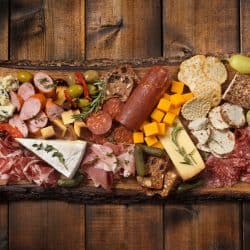Cheese boards and charcuterie boards are a fun way to experiment with different flavor pairings of food. These trays have been around since the 15th century but have recently been making a popular comeback. Before you begin crafting your perfect board, it's important to know what you're making. Charcuterie boards and cheese boards are very similar, so what are the differences? We're here to tell you what makes a cheese board different from a charcuterie board.
The primary difference between a cheese board and a charcuterie board is the amount of meat served. A charcuterie board will have mostly meat with foods to complement the meat. A cheese board has mostly cheese with sides to supplement the cheese.
Keep reading to discover how long charcuterie and cheese boards can safely sit out as well as how many types of meat and cheeses go on each type of board. You'll be a master of the craft by the end of this post, so stick around.
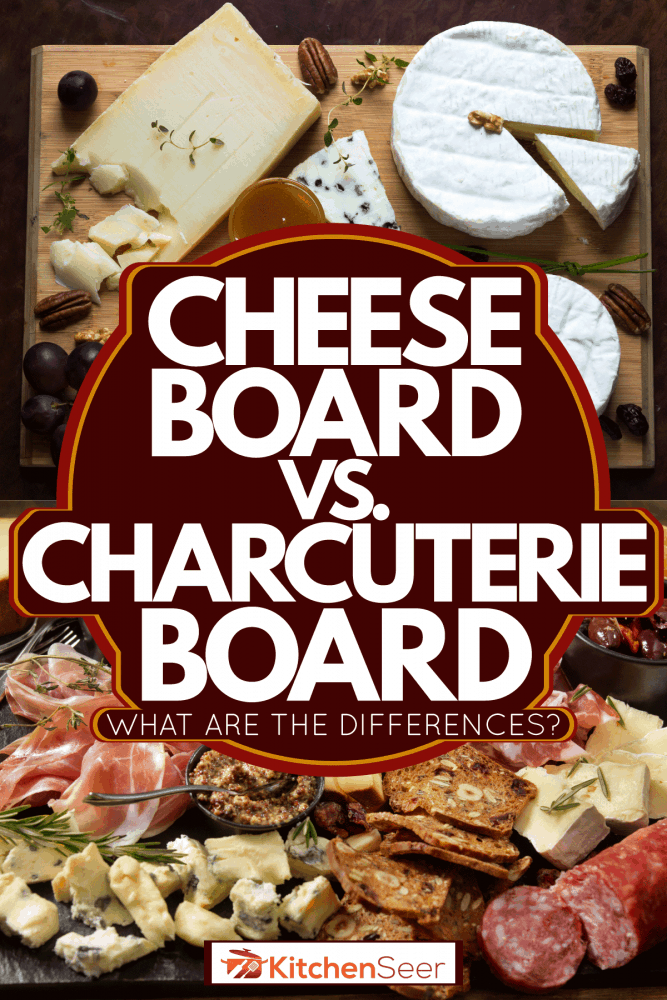
Differences Between Cheese Boards and Charcuterie Boards
Charcuterie boards and cheese boards have very few differences. The main difference is that a charcuterie board has a selection of meats and foods that pair well with those meats. A cheese board has a selection of cheeses and foods that pair well with those cheeses.
This also means that the food pairings will be slightly different between a cheese board and a charcuterie board. A cheese board will typically have sweeter pairings. Apples, jams, nuts, and other fresh fruits go very well on a cheese board. Salty and briny food also go very well on a cheese board.
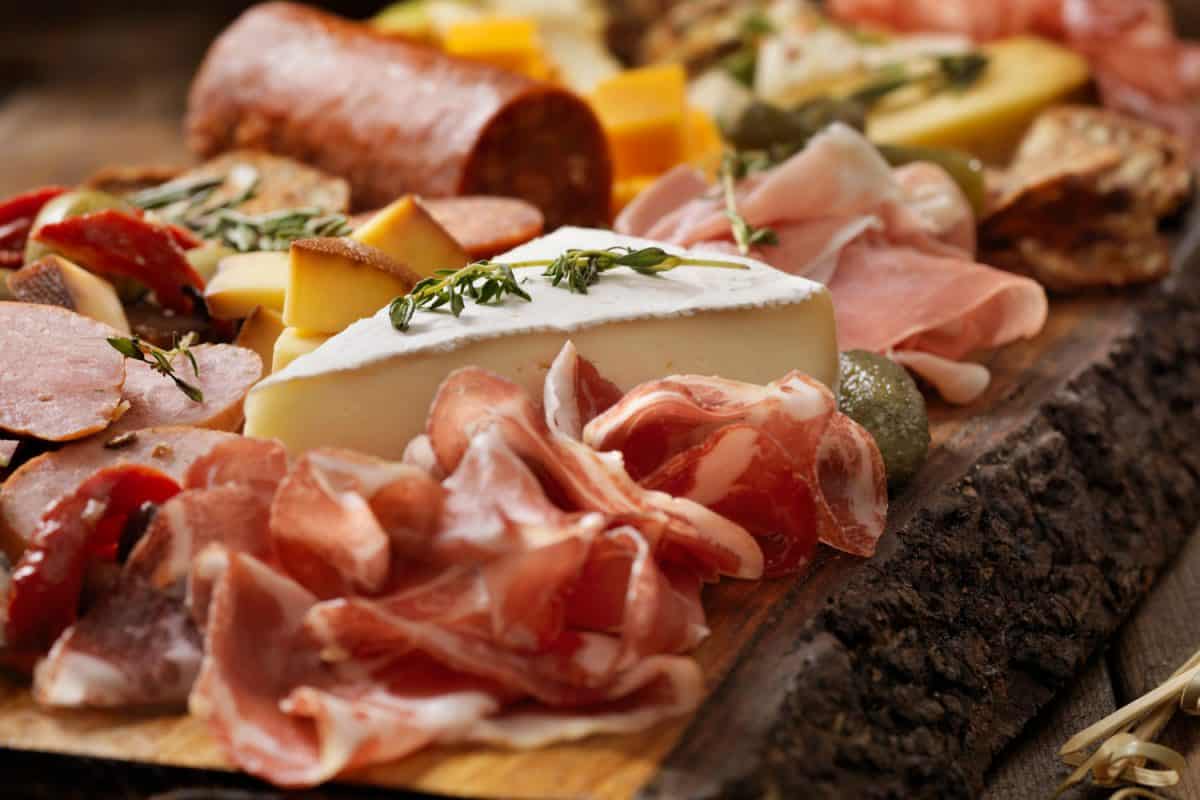
Charcuterie boards pair well with bread and crackers. Vegetables, nuts, and fruits also go well with this type of board. Cheese is also a great pairing for meat. Since the focus of a charcuterie board is on complementing the meat, it's important to not overwhelm your board with cheese.
Similarities Between The Two
Cheese boards and charcuterie boards have many similarities. You can often find the same items on both kinds of boards. Meat and cheese pair wonderfully together and they often have overlaps in texture and flavor pairing. It's natural for a charcuterie board and cheese board to have similar foods on them.
Check out this Acacia serving board on Amazon.
Both cheese boards and charcuterie boards are typically presented in similar ways. It's common to use long, rectangular, wooden boards for serving. Although circular boards and boards made from different materials can also be used.
The biggest similarity between these boards is how customizable they are. From presentation to food used, there are endless possibilities to creating the perfect cheese or charcuterie board.
Why do they call it charcuterie?
The word charcuterie (shar-KOO-ter-ee) is French for a branch of cooking devoted to preparing and serving meat products. A charcuterie board is called that because the board's primary focus is on the meat that it is serving and presenting.
How many meats on a charcuterie board?
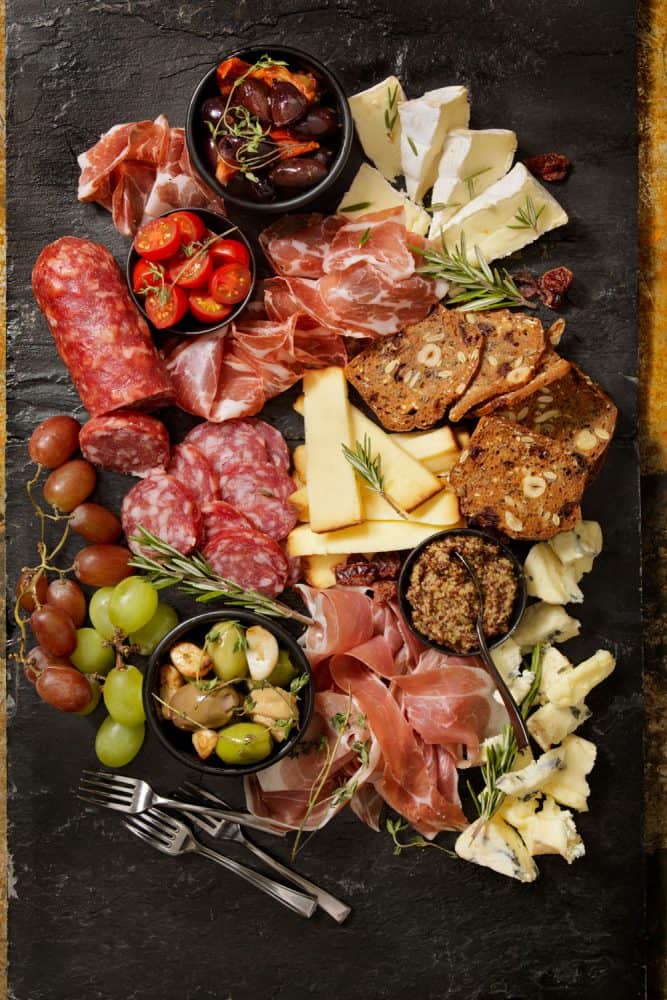
When preparing a charcuterie board it is important to provide the proper amount of food for your guests. This board should have approximately 3 ounces of meat per person. You should also aim to have anywhere from three to five different types of meat. Meat is typically sliced and presented in neatly folded piles throughout the serving board.
What is the proper way to eat charcuterie?
Keep any dips in small bowls directly on the charcuterie board. You can also keep any nuts and fruits in small bowls on the serving board. Other than that, you can place all your meats and foods directly on the board.
When serving your charcuterie board, arrange your products starting with the items in bowls or on small plates. Then arrange the meats and cheeses. Finally, add any bread and fruit into the empty spaces. From there you can adjust your presentation until you're happy with it.
Utensils, such as forks and spreading knives, should be kept close by. Napkins are another important tool to have nearby. If you have bread or cheese that needs to be cut, keep a cutting knife on or close to the serving board.
Most components of charcuterie (and cheese board) are finger foods, so you can compile all the flavors you want in one bite.
How long can a charcuterie board sit out?
A charcuterie board can sit out for no more than two hours. If you wish to save your charcuterie board, then it's important to refrigerate it in under that amount of time.
Be sure to use your charcuterie board within three to five days of purchasing or making it. Your food can either dry out or go bad if you don't use it within that amount of time.
How many cheeses should be on a cheese board?
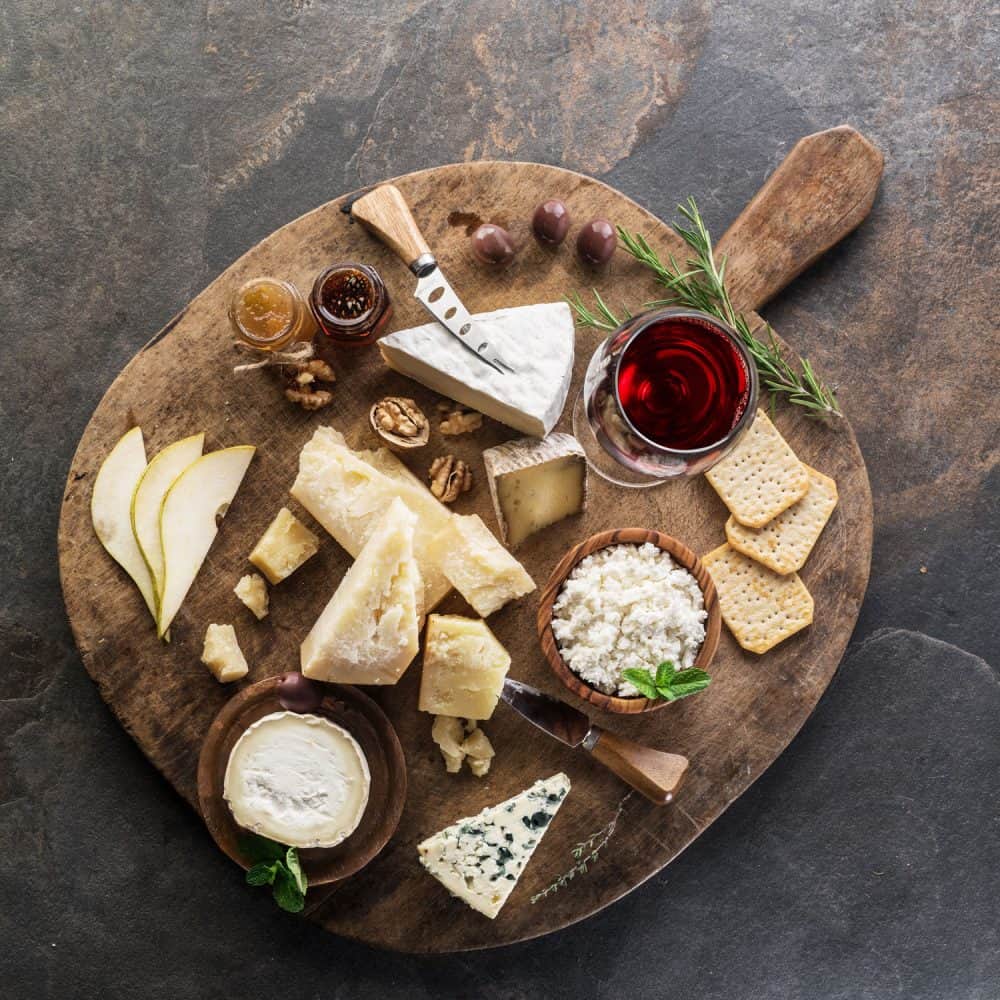
A cheese board should contain, at the most, five different types of cheeses. Try to include a variety of flavors and textures. This will keep the board interesting and fun. Aim for one to two ounces of each type of cheese per person.
How do you cut cheese for a cheese board?
In order to keep your cheeseboard looking nice all evening, you'll need to cut the cheese before serving it. While placing a knife out for your guests to cut it themselves would be easier, it makes a mess and is less hygienic in the long run.
Cheese Wheels
Cut even wedges from the center of the wedge, like you're slicing a cake.
Semi-soft Wedges
Cut a cake-like piece from your semi-soft wedge. After that, cut your wedge into long, thin slices. If you want smaller pieces, cut your long slices of cheese in half.
Semi-firm to Hard Wedges
For semi-firm cheeses, you should cut your wedge horizontally along the narrow edge. Then rotate 90 degrees and cut into the thicker edge of the wedge.
Log Cheese
Cut log cheeses into uniform, circular pieces.
Blue Cheese
For blue cheese, you should cut your wedge in a radial direction beginning from the center of the narrow end.
Rectangular Cheese
With rectangular pieces of cheese, begin by cutting a horizontal piece. This gives you a smaller piece to work with. From there make uniform cuts until you have little squares of cheese.
How do you serve brie on a cheese board?
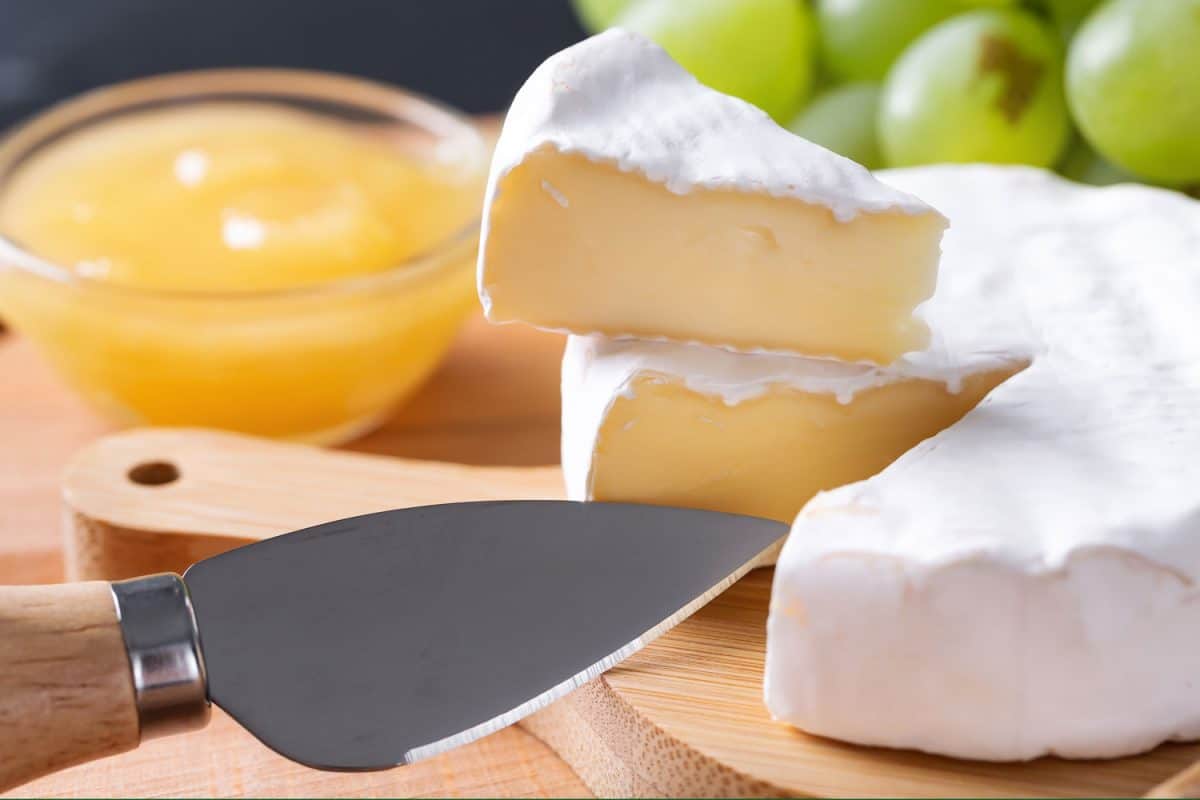
Items on both a cheese board and charcuterie board are best served at room temperature. The same is true for brie. Remove brie from the refrigerator about 30 minutes to an hour before you plan on serving it.
To cut your brie, make long, narrow pieces from the center to the outer edge of the cheese. For brie, the rind can be left on as it is an edible part of the cheese. Yum!
Are you a brie cheese-lover? You may be interested in this article: Can You Microwave Brie Cheese?
How long can a cheese board sit out?
As a general rule of thumb, your cheese board should not sit out for more than two hours. However, specific cheeses may still be safe to eat after two hours. Hard cheeses can be wrapped and refrigerated after two hours, while soft cheeses should be discarded after that time.
In Closing
Cheese boards and charcuterie boards are delicious as both an appetizer and a main course. When creating your board opt for a variety of flavors and textures that will pair well together. Don't be afraid to be adventurous in your food choices, but remember to keep one or two common flavors for less daring eaters.
You may also enjoy the following:
What Do You Serve With Cheese Boards?
What Kind Of Wood Is Used For Cheese And Charcuterie Board?


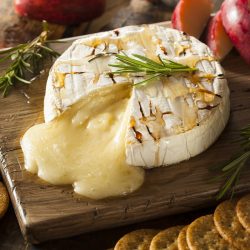
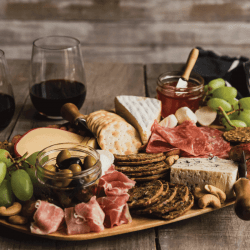
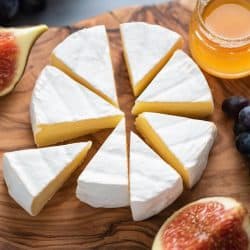

![set of cheese knives on a round wooden board. 14 Types Of Cheese Knives [Inc. What Cheese They're Good For And Why]](https://kitchenseer.com/wp-content/uploads/2021/07/set-of-cheese-knives-on-a-round-wooden-board.-14-Types-Of-Cheese-Knives-Inc.-What-Cheese-Theyre-Good-For-And-Why-250x250.png)
